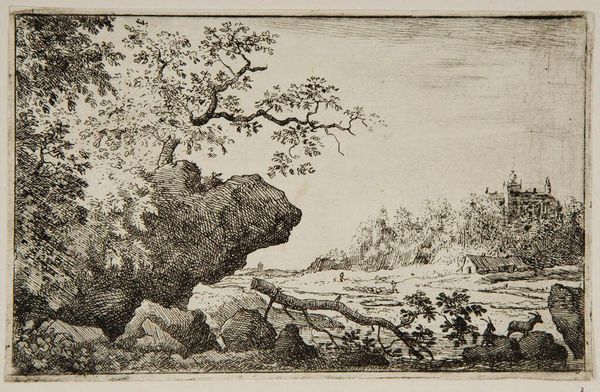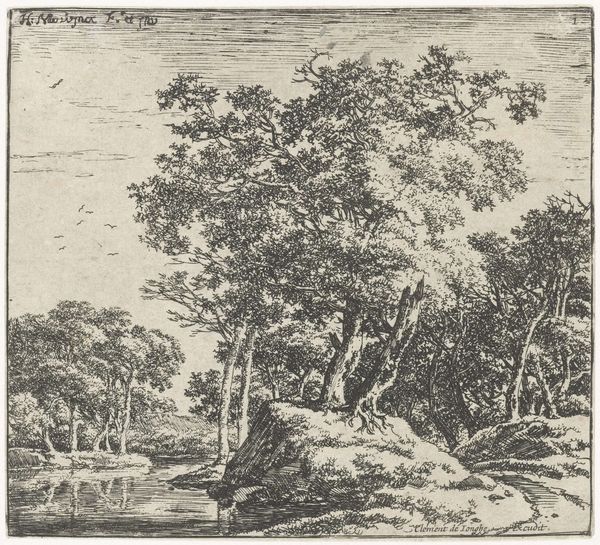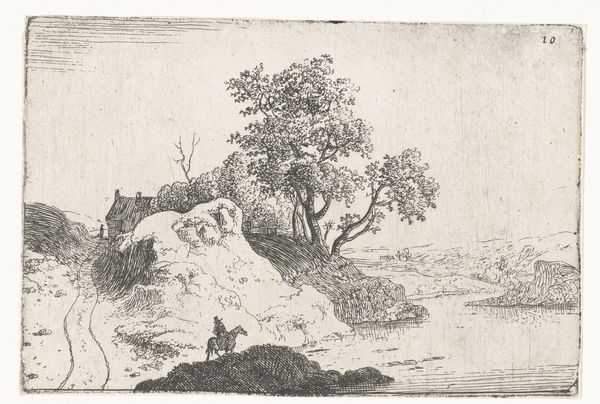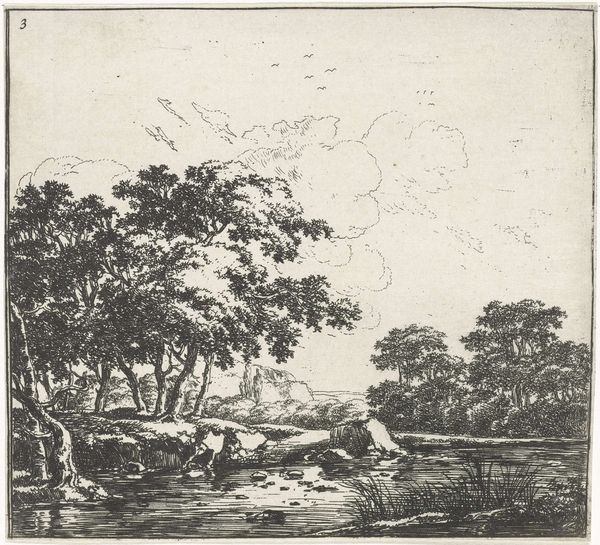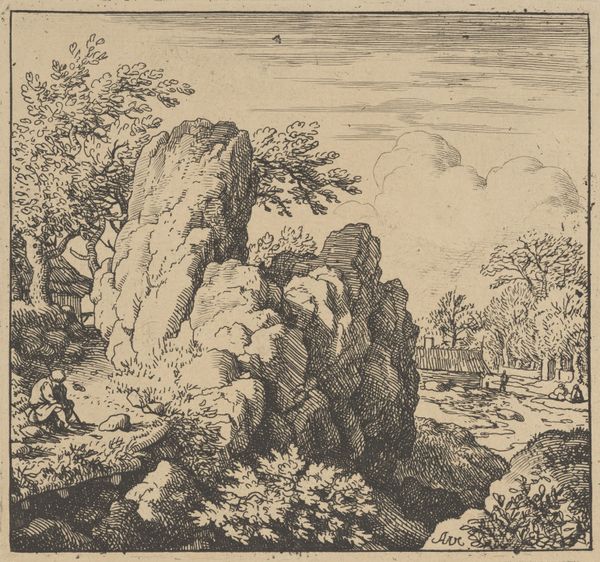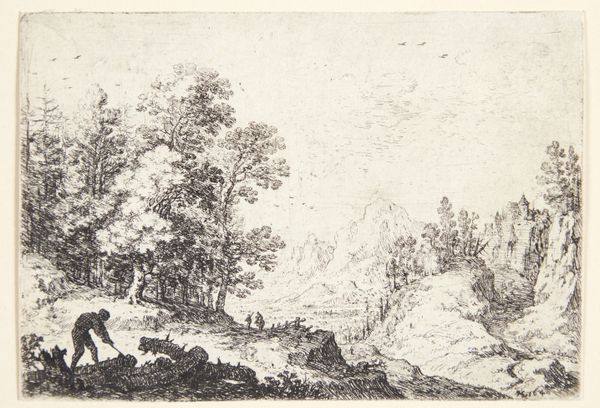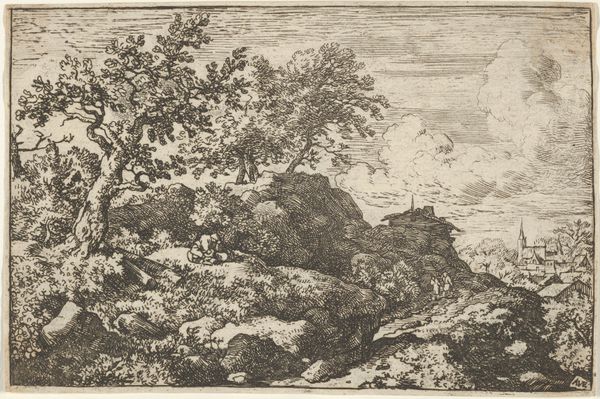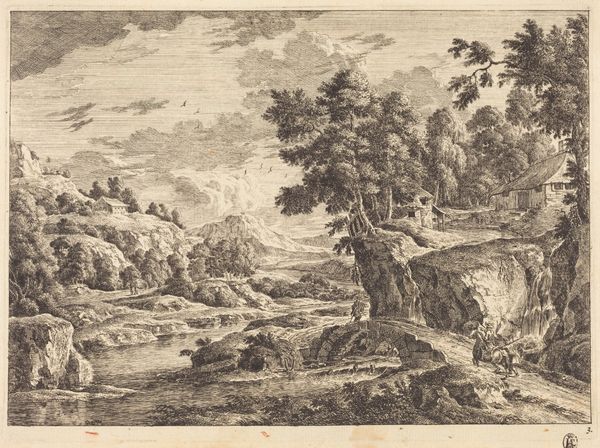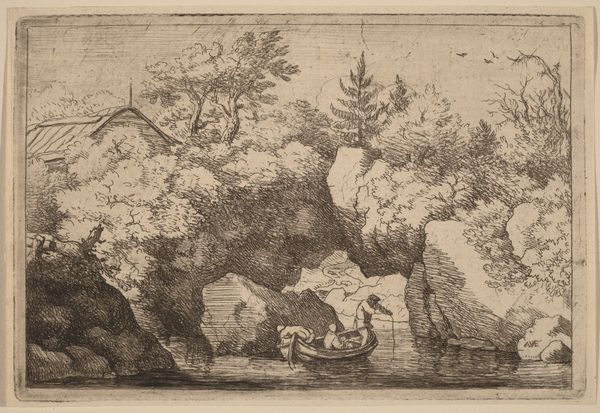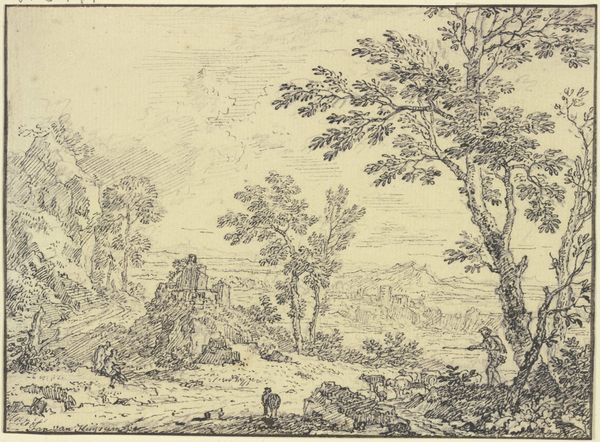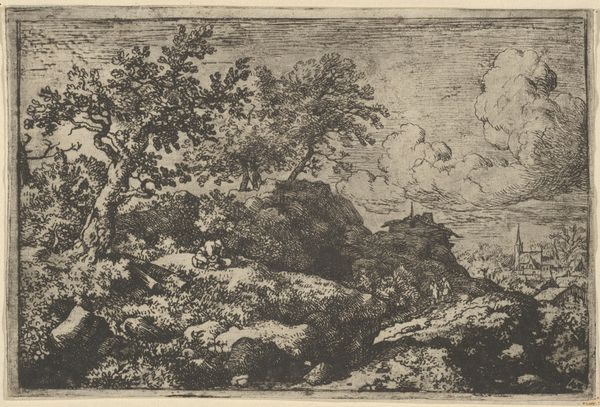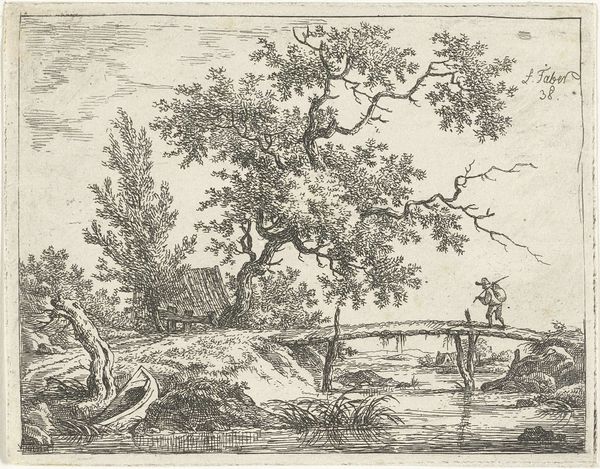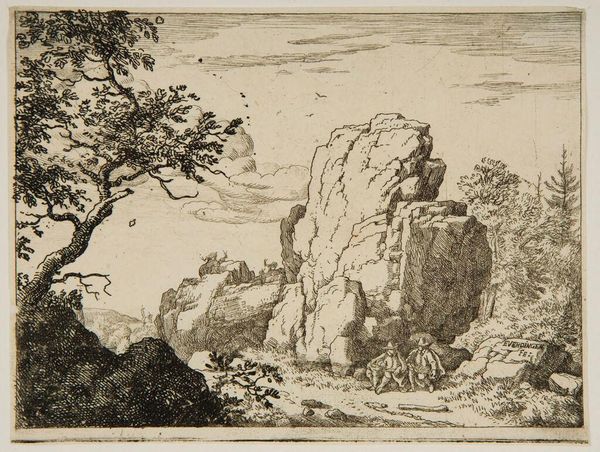
drawing, print, etching, paper
#
drawing
# print
#
etching
#
landscape
#
paper
Dimensions: 99 × 156 mm (image/plate); 101 × 160 mm (sheet)
Copyright: Public Domain
Allart van Everdingen made this print, Branch of a Tree, in the 17th century using etching, a printmaking technique. The process involves coating a metal plate with a waxy, acid-resistant substance called a ground. The artist then draws through the ground with a needle, exposing the metal. When the plate is immersed in acid, the exposed lines are bitten, creating recessed lines in the metal. Ink is then applied to the plate, filling these lines, and the surface is wiped clean. Finally, the plate is pressed onto paper, transferring the ink and creating the print. The quality of the lines, from delicate to bold, reveals the pressure and skill involved in both drawing and acid-biting. Look closely at the landscape, the details on the foliage, and the horizon. The etching process allowed for the relatively quick reproduction of images, making art more accessible. This speaks to a shift in the art world toward broader distribution and consumption, reflecting emerging capitalist modes of production and a growing market for art. Appreciating this print means understanding its materials, its making, and its place within a changing society.
Comments
No comments
Be the first to comment and join the conversation on the ultimate creative platform.
